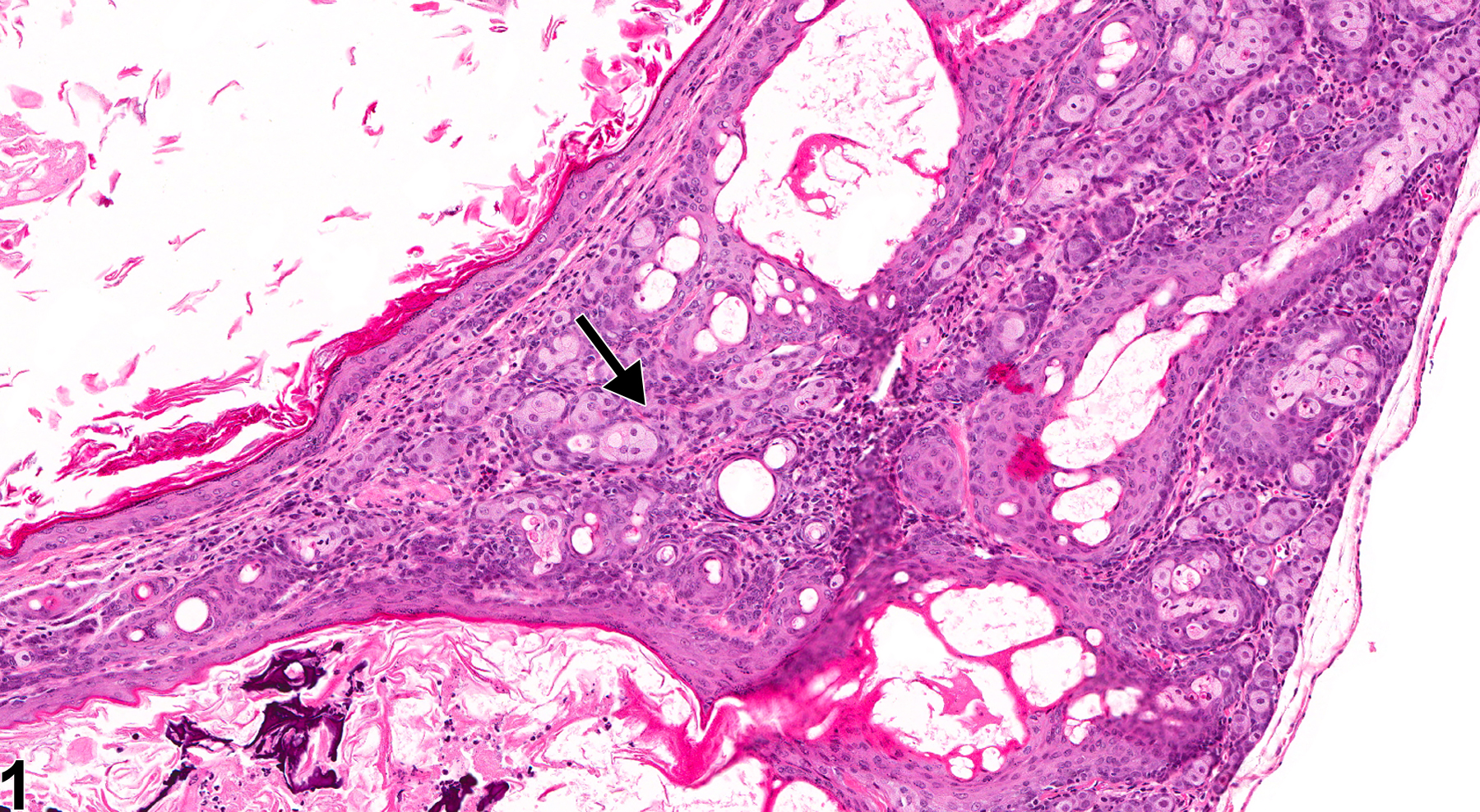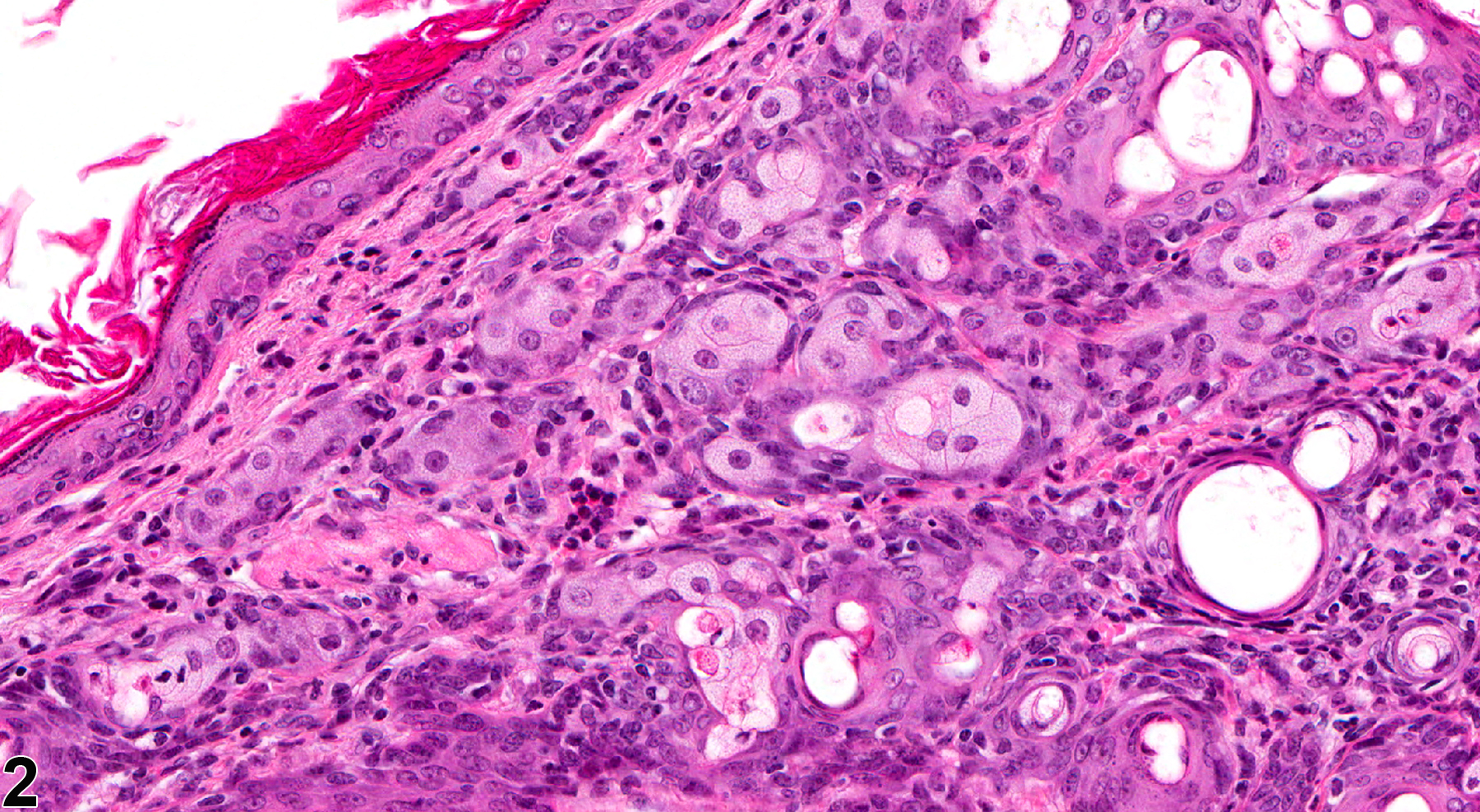Special Senses System
Zymbal's Gland - Inflammation
Narrative
In NTP studies, there are five standard categories of inflammation: acute, suppurative, chronic, chronic-active, and granulomatous. In acute inflammation, the predominant infiltrating cell is the neutrophil, though fewer macrophages and lymphocytes may also be present. There may also be evidence of edema or hyperemia. The neutrophil is also the predominant infiltrating cell type in suppurative inflammation, however, in suppurative inflammation, the neutrophils are aggregated and many of them are degenerate (suppurative exudate). Cell debris, both from the resident cell populations and infiltrating leukocytes, proteinaceous fluid containing fibrin, fewer macrophages, occasional lymphocytes or plasma cells, and, possibly, an infectious agent may also be present in within the exudate. Grossly, these lesions would be characterized by the presence of pus. In the tissue surrounding the exudate, there may be fibroblasts, fibrous connective tissue, and mixed inflammatory cells, depending on the chronicity of the lesion. Lymphocytes predominate in chronic inflammation. Lymphocytes also predominate in chronic-active inflammation, but in chronic-active inflammation, there are also a significant number of neutrophils. Both lesions may contain macrophages. Granulomatous inflammation is another form of chronic inflammation, but this diagnosis requires the presence of a significant number of aggregated, large, activated macrophages, epithelioid macrophages, or multinucleated giant cells. Inflammation is differentiated from cellular infiltrates by the presence of other changes, such as edema, hemorrhage, degeneration, necrosis, or other evidence of tissue damage.
Copeland-Haines D, Eustis SL. 1990. Specialized sebaceous glands. In: Pathology of the Fischer Rat: Reference and Atlas (Boorman GA, Eustis SL, Elwell MR, Montgomery CA, MacKenzie WF, eds). Academic Press, San Diego, CA, 279-294.
Abstract: https://www.ncbi.nlm.nih.gov/nlmcatalog/9002563National Toxicology Program. 2004. NTP TR-518. Toxicology and Carcinogenesis Studies of Triethanolamine (CAS No. 102-71-6) in B6C3F1 Mice (Dermal Studies). NTP, Research Triangle Park, NC
Abstract: https://ntp.niehs.nih.gov/go/9297 Zymbal's gland - Inflammation, Chronic in a male Tg.AC (FVB/N) homozygous mouse from a subchronic study. Chronic inflammation (arrow) in the Zymbal's gland.
Zymbal's gland - Inflammation, Chronic in a male Tg.AC (FVB/N) homozygous mouse from a subchronic study. Chronic inflammation (arrow) in the Zymbal's gland.




